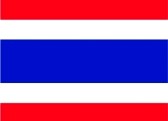All Categories
The Annotated Lolita: Revised and Updated
Share Tweet
*Price and Stocks may change without prior notice
*Packaging of actual item may differ from photo shown
- Electrical items MAY be 110 volts.
- 7 Day Return Policy
- All products are genuine and original








About The Annotated Lolita: Revised And Updated
Amazon.com Review In 1954 Vladimir Nabokov asked one American publisher to consider "a firebomb that I have just finished putting together." The explosive device: Lolita, his morality play about a middle-aged European's obsession with a 12-year-old American girl. Two years later, the New York Times called it "great art." Other reviewers staked a higher moral ground (the editor of the London Sunday Express declaring it "the filthiest book I've ever read"). Since then, the sinuous novel has never ceased to astound. Even Nabokov was astonished by its place in the popular imagination. One biographer writes that "he was quite shocked when a little girl of eight or nine came to his door for candy on Halloween, dressed up by her parents as Lolita." And when it came time to casting the film, Nabokov declared, "Let them find a dwarfess!" The character Lolita's power now exists almost separately from the endlessly inventive novel. If only it were read as often as it is alluded to. Alfred Appel Jr., editor of the annotated edition, has appended some 900 notes, an exhaustive, good-humored introduction, and a recent preface in which he admits that the "reader familiar with Lolita can approach the apparatus as a separate unit, but the perspicacious student who keeps turning back and forth from text to Notes risks vertigo." No matter. The notes range from translations to the anatomical to the complex textual. Appel is also happy to point out the Great Punster's supposedly unintended word play: he defends the phrase "Beaver Eaters" as "a portmanteau of 'Beefeaters' (the yeoman of the British royal guard) and their beaver hats." Product Description The annotated text of this modern classic. It assiduously illuminates the extravagant wordplay and the frequent literary allusions, parodies, and cross-references. Edited with a preface, introduction and notes by Alfred Appel, Jr. Review "...the reader of Lolita attempts to arrive at some sense of its overall 'meaning,' while at the same time having to struggle...with the difficulties posed by the recondite materials and rich, elaborate verbal textures. The main purpose of this edition is to solve such local problems and to show how they contribute to the total design of the novel."--From the Preface by Alfred Appel, Jr. "Fascinatingly detailed."--Edmund Morris, The New York Times Book Review From the Inside Flap The annotated text of this modern classic. It assiduously illuminates the extravagant wordplay and the frequent literary allusions, parodies, and cross-references. Edited with a preface, introduction and notes by Alfred Appel, Jr. From the Back Cover d text of this modern classic. It assiduously illuminates the extravagant wordplay and the frequent literary allusions, parodies, and cross-references. Edited with a preface, introduction and notes by Alfred Appel, Jr. About the Author VLADIMIR VLADIMIROVICH NABOKOV was born on April 23, 1899, in St. Petersburg, Russia. The Nabokovs were known for their high culture and commitment to public service, and the elder Nabokov was an outspoken opponent of antisemitism and one of the leaders of the opposition party, the Kadets. In 1919, following the Bolshevik revolution, he took his family into exile. Four years later he was shot and killed at a political rally in Berlin while trying to shield the speaker from right-wing assassins. The Nabokov household was trilingual, and as a child Nabokov was already reading Wells, Poe, Browning, Keats, Flaubert, Verlaine, Rimbaud, Tolstoy, and Chekhov, alongside the popular entertainments of Sir Arthur Conan Doyle and Jules Verne. As a young man, he studied Slavic and romance languages at Trinity College, Cambridge, taking his honors degree in 1922. For the next eighteen years he lived in Berlin and Paris, writing prolifically in Russian under the pseudonym Sirin and supporting himself through translations, lessons in English and tennis, and by composing the first crossword puzzles in Russian. In 192



























